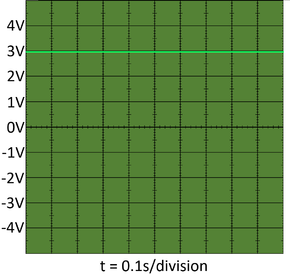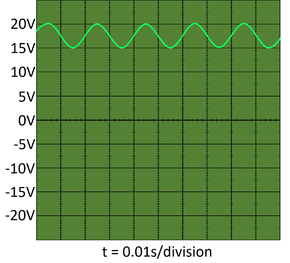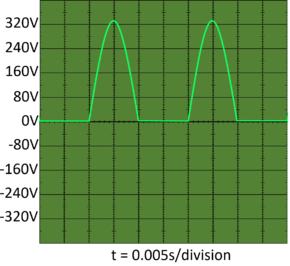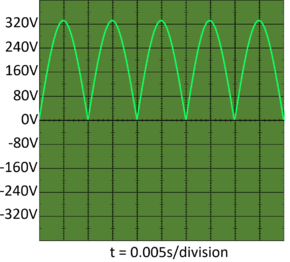Direct Current
Contents
Key Stage 4
Meaning
Direct current (DC)is when electricity flows constantly in one direction.
About Direct Current
- Direct current is produced by electrical cells, batteries and dynamos.
- Direct current can be made from an alternating current using a diode.
- Direct current is needed to charge a cell or battery.
- Direct current is used in electrolysis.
- A constant direct current cannot be used in a transformer.
Examples
| This is a constant direct current from a 3V battery. | This is a fluctuating direct current. |
| This is the direct current caused by mains electricity being passed through a diode. | This is the direct current caused by mains electricity being passed through a Rectifier which is a set of diode. |
References
AQA
- Direct current (d.); generation of, pages, 235, GCSE Physics, Hodder, AQA
- Direct current (d.c), page 305, GCSE Combined Science Trilogy 1, Hodder, AQA
- Direct current (d.c), page 50, GCSE Physics, Hodder, AQA
- Direct current, pages 64, 225, GCSE Physics; Third Edition, Oxford University Press, AQA
- Direct currents (d.c.), page 188, GCSE Combined Science; The Revision Guide, CGP, AQA
- Direct currents (dc), page 86, GCSE Combined Science Trilogy; Physics, CGP, AQA
- Direct currents (dc), pages 31, 97, GCSE Physics; The Revision Guide, CGP, AQA
- Direct currents (dc), pages 89, 306, GCSE Physics; The Complete 9-1 Course for AQA, CGP, AQA
Edexcel
- Direct current (d.c.), page 397, GCSE Combined Science, Pearson Edexcel
- Direct current (d.c.), pages 157, 175, GCSE Physics, Pearson Edexcel
- Direct current, page 192, GCSE Combined Science; The Revision Guide, CGP, Edexcel
- Direct current, page 79, GCSE Physics; The Revision Guide, CGP, Edexcel
- Direct currents, page 246, GCSE Physics, CGP, Edexcel



